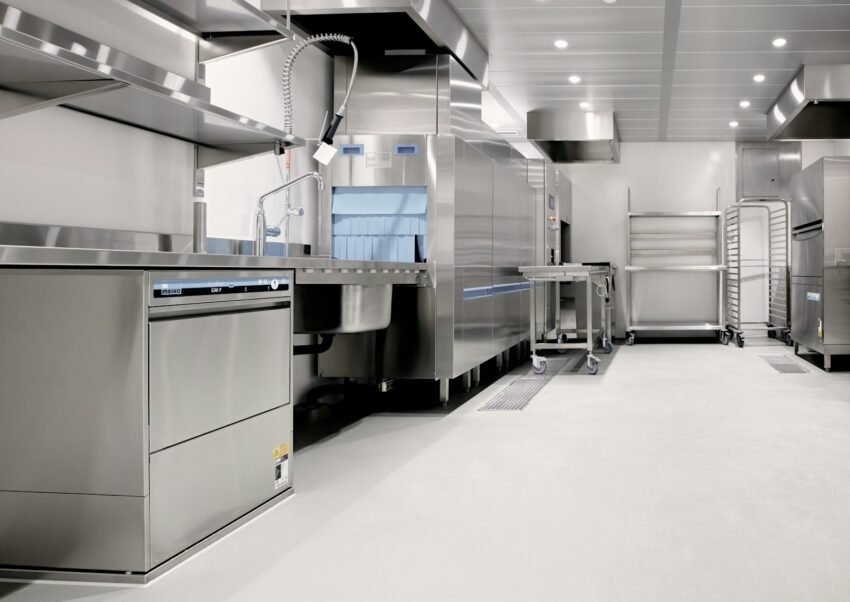For commercial kitchen storage, metal racks play a critical role in maintaining cleanliness, food safety, and organization. The heavy-duty storage platforms keep materials above the ground to avoid contamination by dirt, water, or insects. Whether keeping bulk products, heavy machinery, or cleaning supplies, choosing the proper dunnage rack optimizes storage capacity, adheres to sanitary regulations, and increases the shelf life of your stock. In this guide, we’ll tell you about how to choose the appropriate rack for your establishment.

Comparing Materials: Metal, Aluminium, and Stainless Steel Dunnage Racks
Selection of the right material is essential for long-term performance and safety:
- Metal Dunnage Rack. Racks made of metal are inexpensive and offer strong support under dry conditions. However, they will rust if constantly exposed to water, hence not suitable for foodservice or refrigerated applications.
- Aluminium Dunnage Rack. Light, yet solid, aluminium options are corrosion-resistant and appropriate for cooler or damp areas. They’re also less challenging to move and clean, making them a choice for back-of-house operations and food storage.
- Stainless Steel Dunnage Racks. With their unique features like durability, cleanliness, rust-proofing, and strength qualities, NSF certified racks made of steel best suit the food industry.
When choosing the material, consider the environment: dry storage may be alright with metal, but refrigeration or wet spaces need aluminum or stainless racks.

Size, Weight Capacity, and Design Considerations
Correct load support and sizing are required for operational and secure storage:
- Weight Capacity. Exceeding the rack’s weight output can lead to bending or collapse. Always verify the construction’s rated weight capacity, especially for heavy bulk items.
- Elevated Shelving Units. Select units with adequate clearance from the floor (typically 8–12 inches) to satisfy health codes and allow convenient cleaning beneath.
- Floor-Mounted vs. Freestanding. Use a fixed floor-mounted storage rack or free-standing ones, depending on whether you need mobility or stability.
Carefully measure the area where you are going to use dunnage racks before purchasing, and ensure that there is enough space to use them comfortably without compromising hygiene.
Installation and Maintenance Tips for Long-Term Use
For your steel racks to be functional and long-lasting, proper installation and maintenance are vital. Use these simple recommendations:
- Regular Maintenance. Clean the racks frequently, especially in food preparation or cold storage areas. Employ cleaning solutions that are suitable and will not harm the aluminium dunnage rack.
- Secure Installation. If mounting wall-mount or floor-fixed configurations, utilize heavy-duty anchors and level supports to prevent tilting or movement under weight.
- Routine Inspections. Inspect the metal dunnage rack for loose fittings, rust, or damage to maintain food-safe storage solutions. Replace worn parts immediately to avoid contamination risks.
Having a regular cleaning and inspection schedule not only keeps racks running efficiently but also complies with commercial food establishments’ health codes.
Final Thoughts: Making the Best Choice for Your Storage
Finally, metal, aluminium, and stainless steel dunnage racks may be selected depending on your working environment, budget, and requirement for cleanliness. For foodservice and healthcare, the most corrosion-resistant and contamination-proof racks are made of steel, while other options are a good compromise of strength and portability.
By selecting the right materials, checking weight capacities, and maintaining your racks, you can maximize your storage and contribute to the protection of your inventory. Purchasing quality dunnage racks is a simple and effective way to a safer, more efficient workplace!
